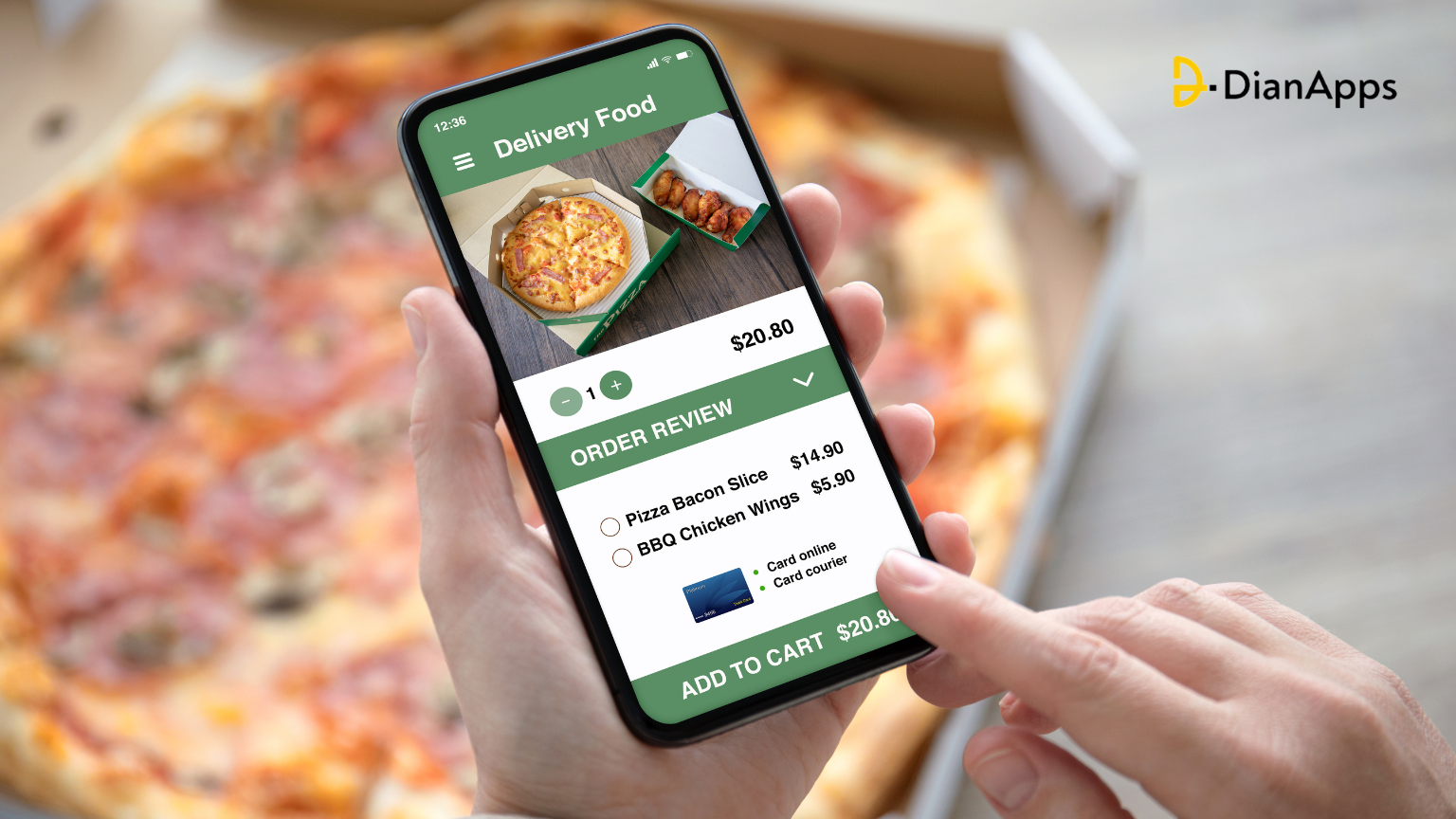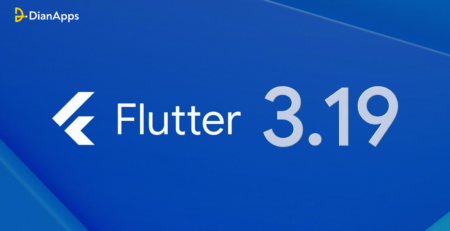Launching A White Label Food Delivery App In the USA
The food delivery industry has experienced tremendous growth in recent years, driven by busy lifestyles and the convenience-seeking habits of consumers. With the rise of mobile app development technology, white-label food delivery apps have become a popular solution for restaurants and entrepreneurs looking to enter this lucrative market.
If you’re considering launching a white-label food delivery app in the USA, you’re tapping into a vast potential customer base and a highly competitive landscape.
Launching a white-label food delivery app requires careful planning, attention to detail, and a deep understanding of the market and user expectations. In this blog, we will provide a comprehensive structure to guide you through the process of launching your own white-label food delivery app in the USA.
By following this structured approach, you can maximize your chances of creating a successful app that resonates with both restaurants and customers alike.
So, let’s dive into the steps necessary to bring your white-label food delivery app to life and make a significant impact in the dynamic food delivery landscape of the USA.
What are White-Label Apps?
White-label apps, also known as private label or re-brandable apps, are pre-built software app development services created by a third-party provider and can be rebranded and customized by businesses to suit their specific needs. These apps are designed to be easily rebranded with the business’s logo, color scheme, and other branding elements, giving the appearance that the app was developed in-house by the business itself.
White-label apps are typically developed to serve a specific purpose or industry, such as food delivery, ride-sharing, grocery delivery app, e-commerce, or social networking. They provide a ready-made solution for businesses that want to enter a particular market quickly without investing significant time and resources in building an app from scratch.
The main advantage of white-label apps is their flexibility and customization options. Businesses can tailor the app’s features, design, and functionality to align with their brand identity and meet the specific needs of their target audience by hiring an experienced app development company. White-label apps also come with pre-built integrations, such as payment gateways and third-party services, which can further expedite the development process.
By using white-label apps, businesses can save development costs and time, as well as benefit from the expertise and experience of the app provider. It allows businesses to focus on branding, marketing, and customer acquisition, while the technical aspects of app development are taken care of by the white-label app provider.
Why is White-Label Food Delivery App Getting Popular?
1. Cost and Time Efficiency:
Developing a food delivery app from scratch can be time-consuming and expensive. White-label apps provide a ready-made solution that significantly reduces development time and costs. Businesses can save resources by leveraging existing app infrastructure and features.
2. Customizability:
White-label apps offer a high degree of customizability, allowing businesses to tailor the app’s design, branding, and features to align with their unique identity and requirements. This customization enables businesses to create a differentiated user experience and stand out in a competitive market.
3. Speed to Market:
With a white-label app, businesses can rapidly enter the food delivery market. Instead of spending months on mobile app development, they can focus on branding, marketing, and acquiring customers. This speed to market is particularly advantageous in fast-paced industries where being early to market can provide a competitive edge.
4. Established Infrastructure:
White-label food delivery apps often come with an established infrastructure that includes features like payment gateways, order management systems, and real-time tracking. These pre-built integrations save businesses the effort of building and maintaining these functionalities, allowing them to concentrate on their core operations.
5. Expertise and Support:
White-label app providers typically have expertise and experience in developing and maintaining apps in the food delivery industry. Businesses can leverage this expertise and receive ongoing support, updates, and technical assistance from the app provider, ensuring a smoother and more efficient app operation.

Why are White-Label Food Delivery Apps So Important For Your Business?
1. Branding and Customer Loyalty:
White-label apps allow businesses to maintain their brand identity throughout the app, creating a consistent and recognizable experience for their customers. This strengthens brand loyalty and fosters customer trust and engagement.
2. Enhanced Customer Experience:
With a white-label app, businesses can offer a seamless and user-friendly interface that aligns with their brand and meets customer expectations. A well-designed app with intuitive navigation and convenient features enhances the overall customer experience, leading to higher customer satisfaction and repeat orders.
3. Market Expansion and Reach:
Food delivery apps provide businesses with access to a wider customer base. By utilizing a white-label app, businesses can quickly expand their reach and serve customers in multiple locations, driving growth and revenue.
4. Competitive Advantage:
In a competitive food delivery market, having a branded app can provide a competitive advantage over businesses that rely solely on third-party delivery platforms. A white-label app allows businesses to establish their presence, promote their unique value proposition, and build direct relationships with customers.
5. Data and Analytics:
White-label apps often come equipped with data analytics capabilities, providing businesses with valuable insights into customer behavior, preferences, and order trends. This data can inform decision-making, optimize operations, and facilitate targeted marketing efforts. Therefore while collaborating with a mobile app developer, ensure to ask about their take on data and analytic management.
Also Read: Benefits of having a food delivery app for business.
Examples of White-Label Food Delivery Apps
There are several white-label food delivery apps available in the market that businesses can customize and brand as their own. Here are a few examples:
1. ChowNow:
ChowNow is a popular white-label food ordering platform that allows restaurants to create their branded mobile and web apps for online ordering. It offers features like menu management, order tracking, loyalty programs, and integration with various POS systems.
2. SpotnEats:
SpotnEats is a white-label food delivery app solution that provides businesses with a complete platform to launch their food delivery service. It includes features like real-time tracking, multiple payment options, order management, and delivery dispatch.
3. Toast POS:
While primarily known as a restaurant POS system, Toast also offers a white-label online ordering solution. Restaurants can create their branded online ordering apps and websites, with features like menu customization, order management, and integration with other Toast POS functionalities.
4. UpMenu:
UpMenu is a white-label online food ordering system that allows restaurants to build their branded apps and websites. It offers features like menu management, order tracking, customer loyalty programs, and integration with various payment gateways.
5. MenuDrive:
MenuDrive is a white-label online ordering platform designed specifically for restaurants. It enables businesses to create their branded apps and websites for online ordering, with features like menu customization, real-time order tracking, and customer management.
6. Mobi2Go:
Mobi2Go is a white-label online ordering platform that focuses on the food and hospitality industry. Businesses can create their branded apps and websites for online ordering, with features like menu customization, order tracking, loyalty programs, and integration with popular POS systems.
These examples represent just a few of the white-label food delivery app solutions available in the market. Each platform offers varying features and customization options, allowing businesses to tailor the app to their specific needs and branding requirements.
Let’s begin with the crucial steps to launch a white-label food delivery app now!
Steps to Launch White-Label Food Delivery App
I. Market Research & Analysis
Before diving into the development process, it is crucial to conduct thorough market research and analysis. Understanding the target audience and competition will provide valuable insights that can shape your app’s features and positioning.
Start by identifying your target audience. Analyze their demographics, preferences, and behavior patterns. Are you targeting busy professionals, students, families, or a specific niche? Understanding your audience will help you tailor your app to meet their specific needs.
Next, conduct a competitive analysis. Identify major players in the US food delivery market and analyze their strengths, weaknesses, unique features, and market share. This analysis will help you identify opportunities for differentiation and innovation in your app.
Additionally, study the mobile development trends and demand patterns. Analyze popular cuisines, delivery preferences, and customer expectations. This research will enable you to stay ahead of the curve and align your app’s offerings with the evolving market trends.
II. Concept Development
Once you have a solid understanding of the market, it’s time to develop your app’s concept. Define your app’s value proposition by identifying its unique selling points. How will your white-label food delivery app provide a superior user experience compared to competitors? Will it offer faster delivery, a wider variety of restaurant choices, or innovative features that enhance convenience?
List the essential features and functionality your app should have. This includes user registration, restaurant listing, menu browsing, ordering, payment processing, order tracking, and ratings/reviews. Consider additional features that can differentiate your app, such as social media integration, loyalty programs, discounts, and promotions.
When designing the user experience (UX), focus on creating a user-friendly and intuitive interface. Develop wireframes and prototypes to visualize the app’s flow and ensure a seamless user journey from browsing to delivery completion. A well-designed and intuitive app will enhance user satisfaction and encourage repeat usage.
III. Technology and Infrastructure
Choosing the right technology stack and developing a robust infrastructure is critical for the success of your white-label food delivery app.
Select the appropriate platform for app development, such as iOS, Android, or web app development. Consider using cross-platform frameworks to optimize development efforts and reach a wider audience.
Design a scalable and secure backend architecture that can handle high traffic and ensure data integrity. Implement APIs for seamless integration with payment gateways, restaurant partners, and third-party services.
Choose a reliable database management system to store and retrieve app data efficiently. Prioritize data security, integrity, and high performance to ensure smooth operations.
IV. Partner Acquisition and Onboarding
Building a strong network of restaurant partners and delivery fleets is crucial for the success of your app.
Develop a strategy to onboard a wide range of restaurant partners. Highlight the benefits of joining your white-label app platform, such as increased visibility, expanded customer reach, and streamlined operations. Establish mutually beneficial partnerships that provide value to both your app and the participating restaurants.
For the delivery fleet, consider partnering with local delivery service providers or building an in-house delivery team. Ensure smooth coordination and efficient delivery management to provide timely and reliable service to your customers.
V. Marketing and Launch
To make a splash in the competitive food delivery market, effective marketing and a well-planned launch are essential.
Create a strong brand identity and logo for your app. Develop a comprehensive marketing plan that includes increasing app awareness and user acquisition. Utilize various channels, such as social media, influencer partnerships, targeted advertisements, and public relations, to reach your target audience effectively.
Implement user acquisition strategies, such as referral programs, discounts, and partnerships with local businesses. Focus on building customer loyalty through personalized offers, rewards, and excellent customer service.
Set a launch date for your white-label food delivery app. Conduct a soft launch or beta testing phase to gather user feedback and make necessary improvements. Plan a robust launch event or campaign to generate buzz and attract users. Leverage the power of social media, online influencers, and collaboration with a good mobile app development company to create a buzz around your app’s launch.
Engage with potential users through targeted advertisements and promotions to drive app downloads and usage.
VI. Operations and Support
Once your app is launched, it’s essential to focus on operational efficiency and providing excellent customer support.
Establish a robust customer support system to handle inquiries, complaints, and support requests. Offer multiple channels for customers to reach out, such as live chat, email, and phone support. Promptly address customer concerns to ensure a positive user experience and build customer loyalty.
Implement quality assurance measures to continuously monitor and improve your app’s performance. Regularly test for functionality, stability, and performance to identify and resolve any issues promptly. Gather user feedback and analyze app analytics to gain insights and make data-driven decisions for further enhancements.
Ensure efficient order management and dispatch processes for smooth coordination between restaurants, delivery personnel, and customers. Integrate with relevant third-party systems, such as payment gateways and inventory management platforms, to automate processes and minimize errors.
VII. Continuous Improvement and Growth
To stay competitive and drive long-term success, focus on continuous improvement and growth strategies.
Implement data analytics tools to gather user data, order trends, and customer behavior. Analyze this data to gain insights into user preferences, identify areas for improvement, and make data-driven business decisions. Use the information to refine your app’s features, optimize user experience, and tailor marketing strategies.
Plan regular updates and feature enhancements based on user feedback, industry trends, and market demands. Continuously iterate and innovate to stay ahead of the competition and meet evolving customer expectations.
Explore opportunities for geographic expansion into new cities or regions. Consider partnerships and collaborations with other food-related businesses to expand your app development service offerings. Continuously seek ways to diversify and grow your user base.

Why Choose DianApps for your White-Label Food Delivery App Development Services?
DianApps is a leading software development company that specializes in building white-label food delivery apps for businesses in the USA. Here’s how DianApps can assist in developing a customized white-label food delivery app:
1. Expertise and Experience:
DianApps has extensive experience in developing food delivery apps and understands the nuances of the industry. They have a team of skilled developers, designers, and project managers who can provide expert guidance throughout the app development process.
2. Customization and Branding:
DianApps understands the importance of branding and customization. They work closely with businesses to understand their unique requirements and tailor the app’s design, features, and functionalities to align with their brand identity. This ensures a fully customized and branded app that reflects the business’s vision and values.
3. User Experience Design:
DianApps focuses on creating seamless and intuitive user experiences. Their designers employ user-centric design principles to ensure that the app is easy to navigate, visually appealing, and optimized for a positive user experience. This leads to increased user engagement, satisfaction, and loyalty.
4. Robust Technology Stack:
DianApps utilizes a robust technology stack to build scalable and high-performance white-label food delivery apps. They leverage cutting-edge technologies and frameworks to develop apps that can handle high traffic, ensure data security, and deliver a smooth user experience.
5. Integrations and Third-Party Services:
DianApps can integrate various essential features into the app, such as real-time order tracking, payment gateways, push notifications, and inventory management systems. They also have experience integrating with popular third-party services, such as mapping and geolocation APIs, to enhance the functionality of the app.
6. Quality Assurance and Support:
DianApps has a dedicated quality assurance team that conducts rigorous testing to ensure the app’s functionality, performance, and security. They also provide ongoing support and maintenance services to address any issues, release updates, and ensure the app’s smooth operation post-launch.
7. Project Management:
DianApps follows a structured project management approach to ensure timely delivery and effective communication throughout the development process. They provide regular progress updates, conduct testing and feedback cycles, and adhere to agreed-upon timelines and milestones.
Conclusion
Launching a white-label food delivery app development in the USA presents an exciting opportunity to tap into the growing demand for convenient and on-demand food delivery services. By following a well-structured approach that includes thorough market research, strategic concept development, robust technology implementation, effective marketing, and operational excellence, you can position your app for success in this competitive industry.
Remember to prioritize user experience, forge strong partnerships with restaurants and delivery fleets, and provide exceptional customer support. Continuously analyze data, gather user feedback, and adapt your app to meet evolving market trends and user expectations.
With a strong foundation and a focus on continuous improvement, your white-label food delivery app has the potential to become a go-to platform for customers seeking delicious meals delivered right to their doorsteps. Embrace the opportunity, innovate, and make a mark in the dynamic food delivery landscape of the USA.




